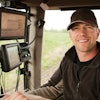Des Plaines, IL: Members of the American Society of Safety Engineers (ASSE) say that distracted driving can lead to harrowing life changing events and warns drivers to pay attention to the road as part of April's Distracted Driving Awareness Month.
ASSE's Transportation Practice Specialty (TPS) group wants drivers to realize that their vehicle is a machine weighing anywhere from 3,000 pounds and up and can cause major damage especially if it crashing while traveling at speeds of 40 miles or more per hour, for instance. The ASSE TPS has developed a 'How to Avoid Distracted Driving' tip sheet discussing crash force, distraction events, distance traveled in seconds and more available at: http://www.asse.org/newsroom/safetytips/distracteddriving.php.
Statistics show that 500,000 people are injured each year and another 6,000 are killed by drivers who are distracted, particularly by their phone.
Young drivers are more likely to be killed in distraction-related crashes, according to the US Department of Transportation (DOT).
"It's not just happening in the US, distracted driving is a major international problem," ASSE TPS Administrator Nancy Bendickson said. "ASSE members have noted that companies in some countries have strict driving rules while on company property, but once off that property the employees are prone to a greater risk of being in a roadway crash. One international company official said last year several of their employees were killed in car accidents after leaving the workplace to return home."
ASSE TPS members Earnest F. Harper, CSP, DABFE, DABFET, CFC, of Idaho, and Timothy C. Healey, of Connecticut, note that people should realize there are clear physical dynamics involved that can be dangerous when one is operating a large machine like a car and take their eyes off the wheel, even for a few seconds.
"At 40 mph you are traveling 58.7 feet-per-second (fps) meaning that in the 2.9 seconds it takes for that eye glance, looking away from the road ahead, to reach for something you will have traveled 170 feet (58.7fps x 2.9s). At 60 mph, you are moving at 88 fps," Harper noted. "During that 2.9 second glance away from what you are driving into, you have traveled over 255 feet."
"In either case, at these common speeds, each is more than enough time to end up being several feet under that slow moving tractor-trailer rig ahead of you that you didn't see," Healey noted. "And in a 40 mph crash a 100 pound person or child who isn't wearing a seat belt will hit the dash board with a force of 2.6 tons, and a 3,000 pound car crashing at 40 mph will experience a crash force of 80.28 tons reducing any chance of surviving."
The Transportation Practice Specialty group suggests to avoid distracted driving one should:
- Program your device so you do not answer and notify the caller that you will be driving and are not available to respond at the moment. In an emergency, family should know to call 911 or other family members. If family or certain individuals urgently need to reach you, devise a procedure such as three rings, hang up, wait two minutes and call again, repeat once to allow time to pull over safely.
- Know your route in advance and, if using a navigation system, pre-program it.
- Prepare the vehicle cab and yourself for driving, including your management of any distraction, be they inside or outside of your vehicle.
- Focus on driving: Maintain safe spacing or move to a less obstructed lane.


















